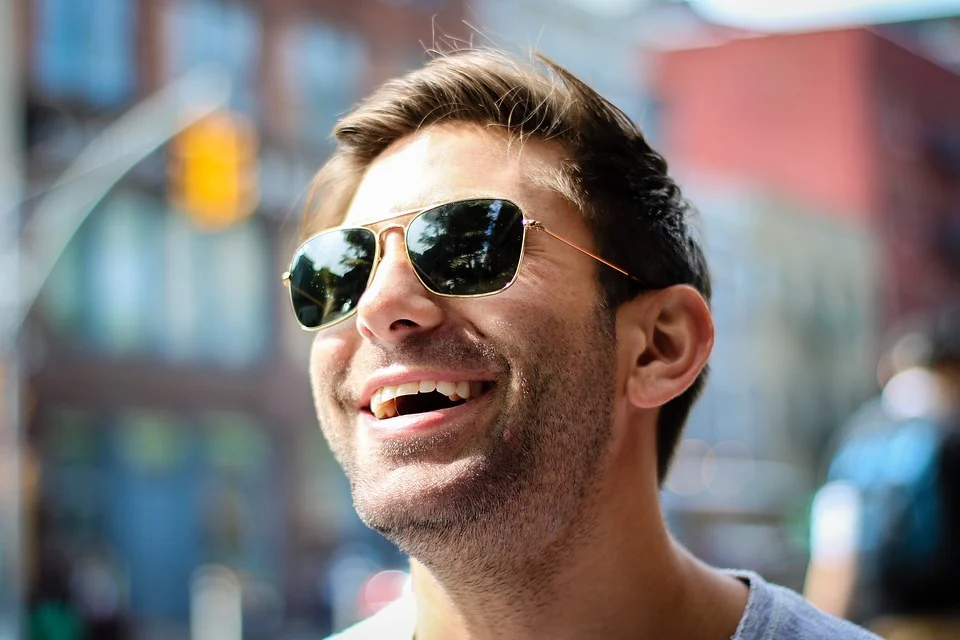Sunglasses are more than just a fashionable summer accessory. When choosing your new pair, your safety must come first. We’re sure you want to keep up with the latest trends every year, so spending a lot of money can be difficult.
However, you can opt for classic models that will always provide adequate protection to your eyes and the surrounding area on your face. Purchasing a high-quality pair is an investment because you will be able to use them for many years and in every season. You could get skin burns or severe eye damage if you use low-quality models.
It would be best if you finally abandoned your inexpensive and potentially harmful sunglasses in favor of high-quality options. But how do you spot them? Is there a way to discern which models are good and which are bad?

-
UV Protection
The perfect sunglasses for eye protection will come from well-known companies. As a result, they will always specify the UV protection level on their labels. You’ll notice them in one of two ways: either as 100 percent UV protection or as UV filter category UV 400.
UV 400 lenses filter all light rays with wavelengths up to 400 nanometers, which includes both UVA and UVB rays. When searching for sunglasses, the first piece of advice is to seek either of these qualities to ensure that they give the optimum UV protection for your eyes.
-
Dark Sunglasses Should Be Avoided
The belief that the darker your sunglasses are, the more they may shield your eyes from the sun is a widespread misunderstanding. The truth is that a lens’ blackness does not always imply that it can block UV rays more effectively. If your sunglasses are black but do not have 100 percent UV protection lenses, they will not adequately protect your eyes.
The primary purpose of dark shades is to block out ambient light and glare. Moreover, dark shades have a drawback: they cause your pupils to dilate, allowing more light to enter your eyes. When your sunglasses aren’t UV-protected, you’re exposing yourself to more UV rays, which raises your risk of cataracts and macular degeneration. If you choose dark sunglasses, be sure they have 100 percent UV protection lenses.

-
Packaging
Packaging, believe it or not, can reveal a lot about a product. Though it is not the primary reason you are paying for the sunglasses, it does provide some insight into their quality. Keep in mind that in order to improve sales, marketers and designers spend a lot of thinking, preparation, and effort on the packaging. It is more progressive and posh when it comes to high-end brands.
As a result, the packaging is an essential component in recognizing genuine products, not only for sunglasses but for all designer items. The best sunglasses, such as from Otticait.com, come with high-end packaging and accessories, such as an instructions manual, case, and cleaning cloth.
-
Brand
There’s a reason why some brands are more well-known than others. You may be confident that a company’s products are timeless, sturdy, and well-liked if it has been in business for a long time and its customers have come to know and trust it.
Purchasing from a brand is vital because if you’re spending money on new sunglasses, you want to make sure they’ll endure and that you’ll look good wearing them.

-
Lens Quality
The color and quality of the lenses are critical. Instead of looking for a darker tint, look for one that is uniform. Hold the glasses at arm’s length and look through the lenses at a distance in a straight line to check for flaws such as the door’s edge. Then move the glass across the line carefully. The lens will not be flawless if the straight edge curls, distorts, sways, or moves unevenly.
-
Polarized Glasses
When shopping for sunglasses, one of the first things you should look for is a lens that protects UV rays and is polarized. UV ray protection acts as an eye sunscreen, and polarized lenses assist filter and block reflected light, making driving and outdoor activities more manageable and safer.
Although polarized lenses often prevent UV rays, this isn’t always the case. Polarized lenses aren’t really polarized in the first place. Depending on their orientation, they are filters that only allow one type of light to pass through.
Polarized lenses block off reflecting light like a wet road and are found in the most expensive frames. Polarized lenses also reduce glare more effectively than colored lenses.
Horizontal light waves bouncing off surfaces like water, snow, or glass are filtered out by polarized lenses. That’s why they’re helpful in circumstances where bright glares might be dangerous, such as driving or skiing.

-
Frame
Expensive frames are composed of more vital metals like stainless steel or titanium. In addition, unlike a cheap frame comprising nickel, those metals will not irritate your skin. Several people are allergic to nickel and may develop a rash around their eyes whenever they wear their cheaper sunglasses.
Cheap plastic frames are difficult to adjust and maintain, and the hinges are weak. The quality is simply not up to the standard to be worn at a party.
A low-quality frame will use metal alloys that are a mixture of many metals, such as brass and copper, which are soft metals and get readily bent to save money.
To avoid UV rays from all sides, including behind, you should pick a frame that fits near the eyes and molds to the shape of the face.
Conclusion
Congratulations! You can now call yourself a snob when it comes to eyewear. When looking for fashionable, high-quality sunglasses, you now know just what to look for. The ideal pair is waiting for you to put them on! However, there are two critical points to keep in mind: Never leave the house without them, and make sure you get a pair that complements your face shape! You’re now ready to look for your next pair of high heels.

